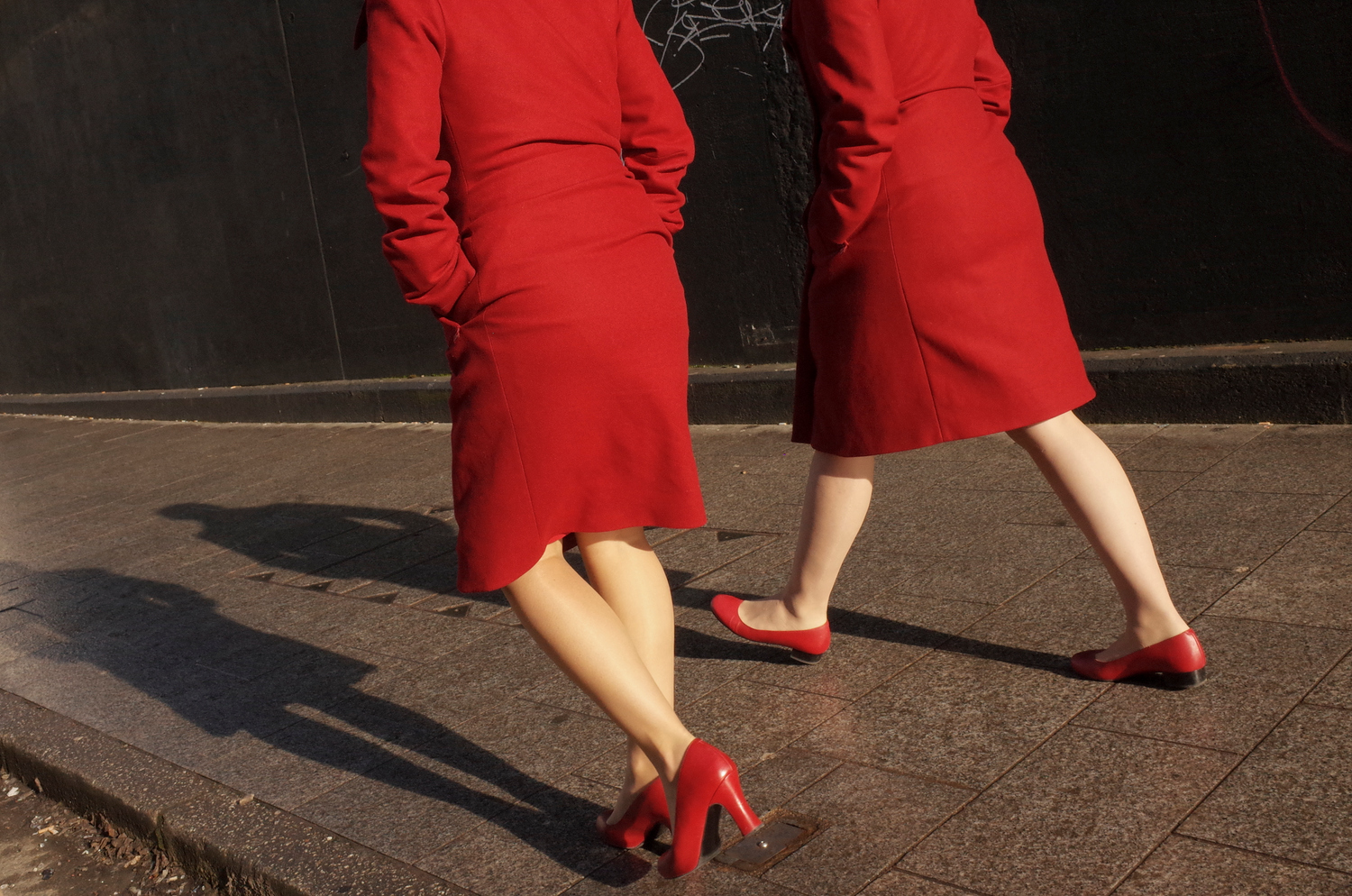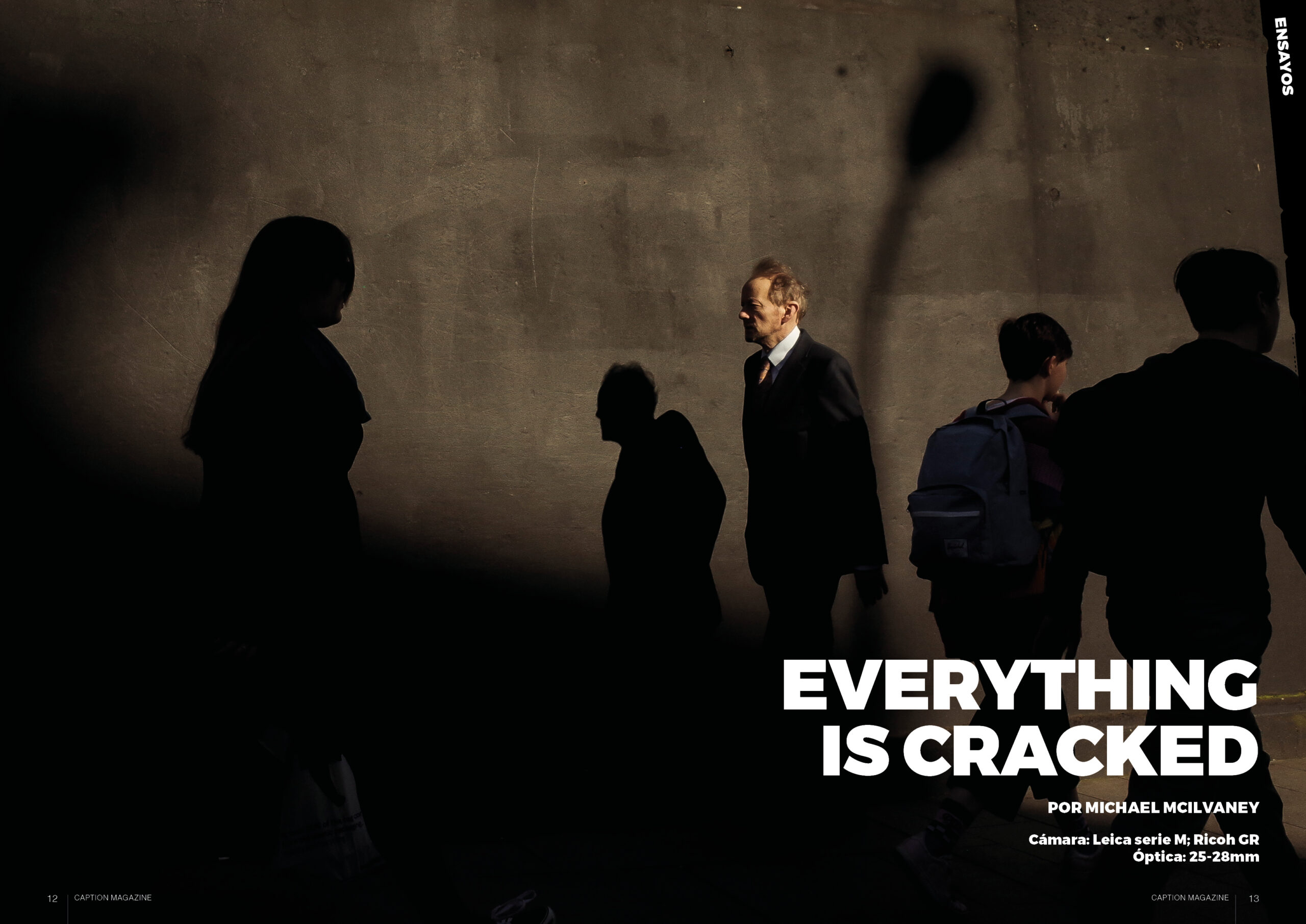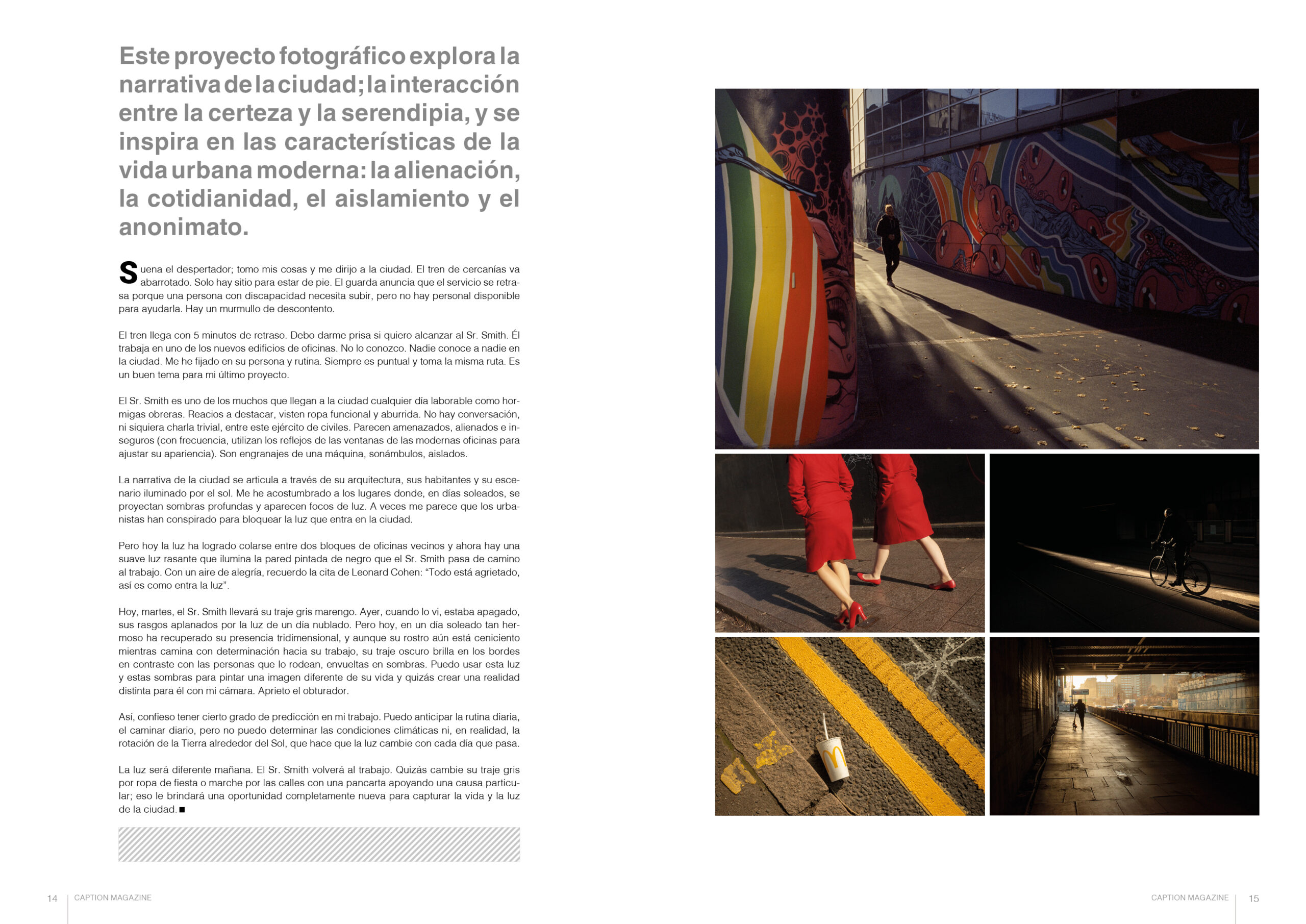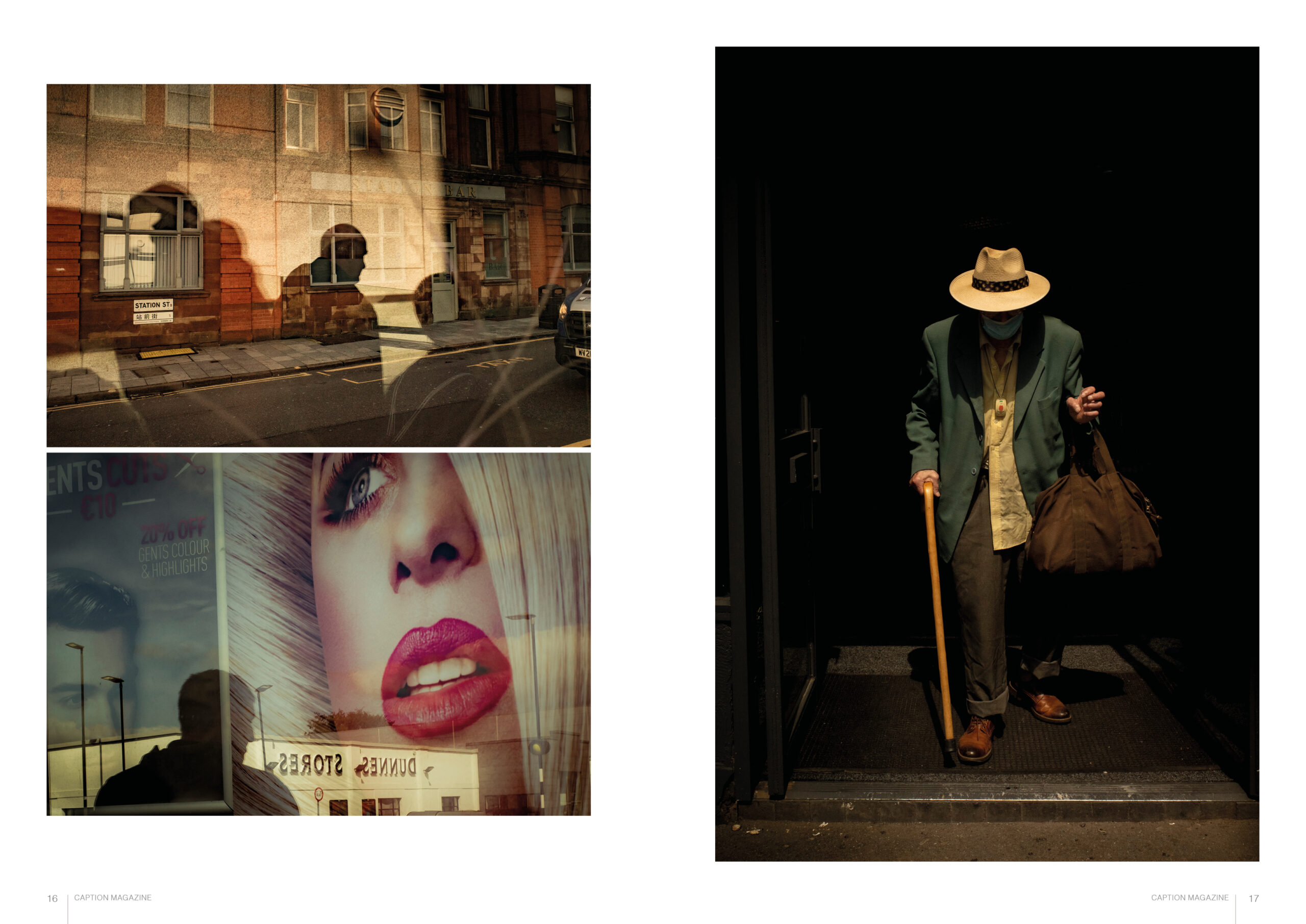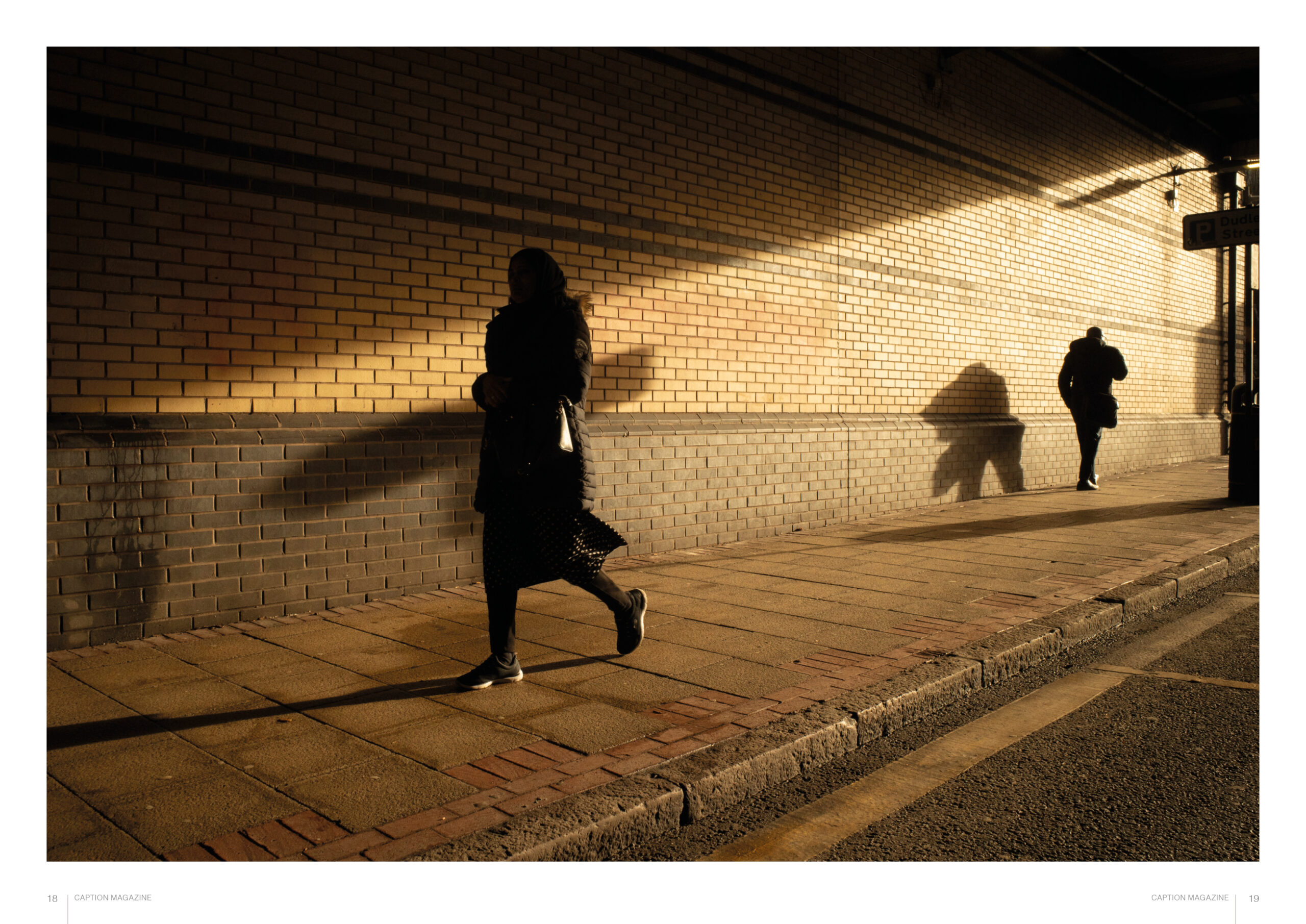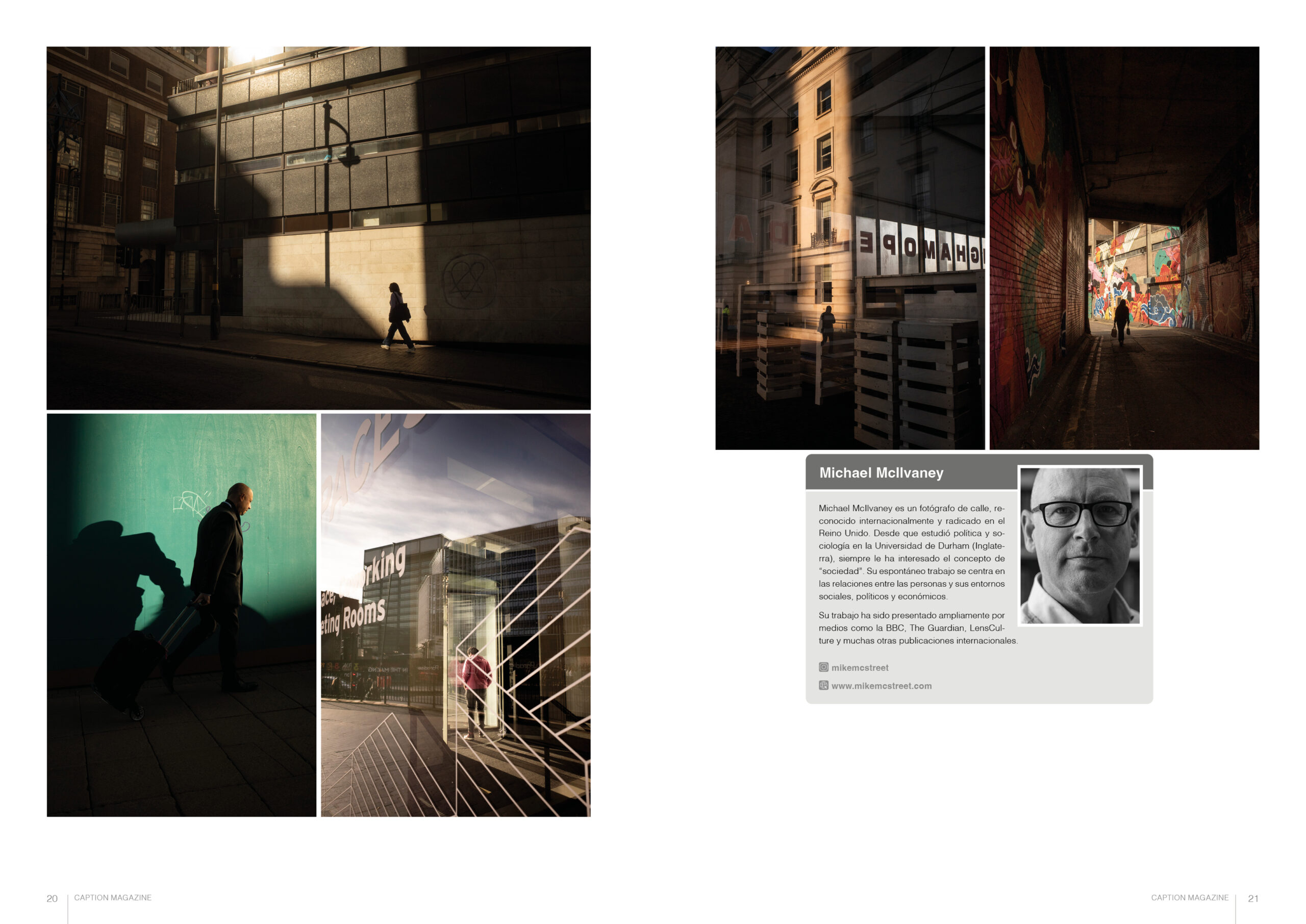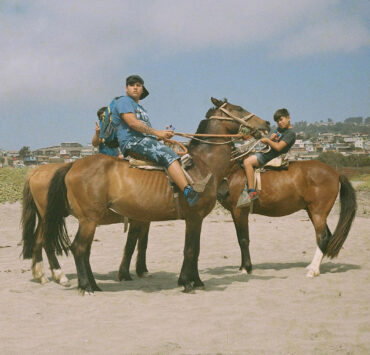Everything is cracked
By Michael McIlvaney
This photographic project explores the narrative of the city; the interaction between certainty and serendipity, and is inspired by the characteristics of modern urban life: alienation, everyday life, isolation and anonymity.
The alarm clock rings; I grab my things and head to the city. The commuter train is overcrowded. There is only room to stand. The guard announces that the service is delayed because a person with a disability needs to get on, but there are no staff available to help him. There is a murmur of discontent.
The train arrives 5 minutes late. I must hurry if I want to catch up with Mr. Smith. He works in one of the new office buildings. I don’t know him. Nobody knows anyone in the city. I have noticed his person and routine. He is always punctual and takes the same route. It’s a good theme for my latest project.
Mr. Smith is one of many who come to town on any weekday as worker ants. Reluctant to stand out, they wear functional and boring clothes. There is no conversation, not even small talk, among this army of civilians. They seem threatened, alienated, and insecure (they often use the reflections of modern office windows to adjust their appearance). They are cogs in a machine, sleepwalking, isolated.
The city’s narrative is articulated through its architecture, its inhabitants, and its sunlit setting. I’ve become accustomed to places where, on sunny days, deep shadows are cast and spotlights appear. Sometimes it seems to me that urban planners have conspired to block the light coming into the city.
But today the light has managed to sneak between two neighboring office blocks and now there is a soft grazing light illuminating the black-painted wall that Mr. Smith passes on his way to work. With an air of joy, I remember Leonard Cohen’s quote: “Everything is cracked, that’s how the light comes in.”
Today, Tuesday, Mr. Smith will wear his charcoal gray suit. Yesterday, when I saw him, he was dull, his features flattened by the light of a cloudy day. But today, on such a beautiful sunny day, he has regained his three-dimensional presence, and although his face is still ashen as he walks determinedly to his work, his dark suit shines on the edges in contrast to the people around him, shrouded in shadows. I can use this light and shadows to paint a different picture of his life and perhaps create a different reality for him with my camera. I tighten the shutter.
Thus, I confess to having a certain degree of prediction in my work. I can anticipate the daily grind, the daily walk, but I can’t determine the weather conditions or, for that matter, the Earth’s rotation around the Sun, which causes the light to change with each passing day.
The light will be different tomorrow. Mr. Smith will return to work. Perhaps you will change your gray suit for party clothes or march through the streets with a banner supporting a particular cause; That will give you a whole new opportunity to capture the life and light of the city.
About the author:
Michael McIlvaney is an internationally recognized street photographer based in the United Kingdom. Since studying politics and sociology at the University of Durham (England), he has always been interested in the concept of “society”. His spontaneous work focuses on the relationships between people and their social, political and economic environments. His work has been widely featured by outlets such as the BBC, The Guardian, LensCulture, and many other international publications.
Links:

